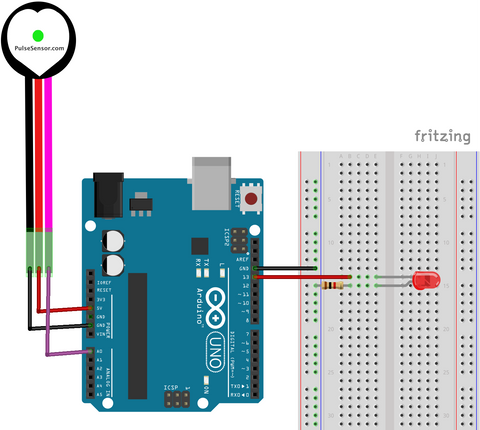The "GettingStartedProject"
👩🏽💻💕 Set-up the Hardware and Software, and see your heartbeat & pulse !

We've also put together this handy guide.
PulseSensor Starter Project Code Features
- Blink Pin 13 LED with your heartbeat!
- Live visualization of Pulse Signal on Arduino Serial Plotter
- Newbie-friendly code
Once you've installed our Playground, go to: File > Examples > PulseSensor Playground > Getting Started

Upload to your Arduino UNO [or other hardware platform], and place the PulseSensor on your fingertip. You should see Arduino's built-in LED (near Pin 13) blink with you heartbeat !

This basic sketch is designed to work with the Arduino Serial Plotter, a handy dandy tool that Arduino put into their IDE for visualizing the kind of analog signals that Pulse Sensor puts out. While the sketch is running and your Arduino board is connected to your computer USB, click on: Tools > Serial Plotter

Experiment to Get the Best Signal:

Arduino will read in the analog signal from the PulseSensor, and when the signal goes higher than a threshold value, Pin13 LED will light up.
